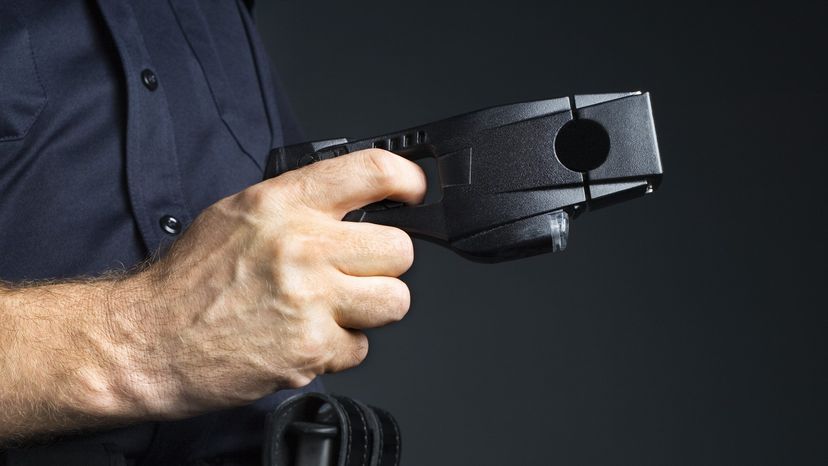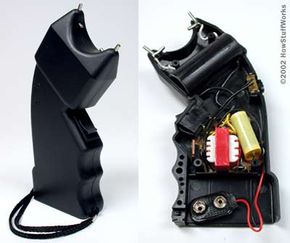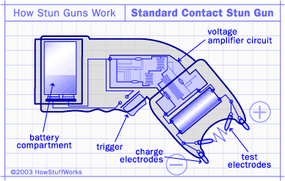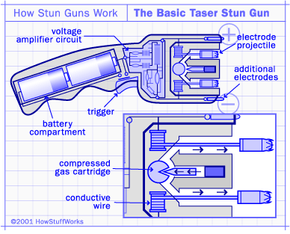On the old "Star Trek" series, Captain Kirk and his crew never left the ship without their trusty phasers. One of the coolest things about these weapons was the "stun" setting. Unless things were completely out of control (as they frequently were), the Enterprise crew always stunned their adversaries, rendering them temporarily unconscious, rather than killing them.
We're still a ways off from this futuristic weaponry, but millions of police officers, soldiers and ordinary citizens do carry real-life stun weapons to protect against personal attacks. Like the fictional phasers of "Star Trek," these devices are designed to temporarily incapacitate a person without doing any long-term damage.
Advertisement
In this article, we'll find out how stun guns and Taser guns pull off this remarkable feat. While these weapons are by no means infallible, they can save lives in certain situations.






